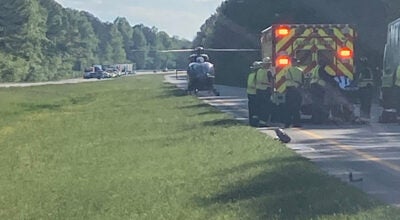You Asked: When does daylight-saving time start?
Published 10:19 pm Tuesday, March 3, 2020
|
Getting your Trinity Audio player ready...
|
Editor’s Note: “You Asked” is a new feature that will run every other week, answering questions that readers have posed. You can submit your questions by emailing news@suffolknewsherald.com.
Readers will need to be ready to spring forward one hour this weekend when daylight-saving time begins early Sunday morning.
Daylight-saving time will begin at 2 a.m. on Sunday in most areas of the United States, according to a Farmers’ Almanac press release. “Most of us dread this time change because it feels like we are losing an hour of sleep. If you set your alarm for 6 a.m., you’ll have to rise at what was 5 a.m. even though the clock face says 6 a.m.”
According to U.S. law, states can choose whether to observe daylight-saving time. The press release states that, at present, the only places in the country that do not observe daylight-saving time are Arizona — with the exception of the Navajo Nation — and Hawaii, plus a few other U.S. territories.
“At least 40 countries worldwide observe daylight-saving time, including most of Canada, though the majority of Saskatchewan and parts of northeastern British Columbia don’t participate,” the press release states.
According to AAA Tidewater Virginia, this change in sunrise and sunset times may pose added risk for drivers and pedestrians.
Pedestrian deaths have increased nationwide, the Tuesday press release states, which is why AAA Tidewater is urging adults to pay extra attention this month while driving or walking outdoors, and for parents to teach children playing outside to watch out for motorists.
Motorists should driver slower and be more alert, especially in neighborhoods and school zones, because more pedestrians, joggers and bicyclists will be outdoors in the longer evening daylight hours. There were 126 fatalities involving pedestrians across Virginia in 2019, a 37-percent increase from 2015, according to the Department of Motor Vehicles.
Drivers need to be prepared for reduced visibility during their morning commutes when the time changes this weekend, since sunrise is not until after 7 a.m.
“The early morning drive to work or school will be darker, which makes it more difficult to see pedestrians and school children on foot,” Holly Dalby, director of public affairs for AAA Tidewater Virginia, states in the press release. “Drivers also may need to turn on their headlights, if beginning their commute in the early morning.”
The press release includes the following safety tips for pedestrians:
- See and be seen — drivers need to see you to avoid you.
- Pay attention. Put down your cell phone while walking.
- Make eye contact with drivers when crossing streets.
- Wear bright colors or reflective clothing at dusk and at night.
- Carry a flashlight when walking or walking pets after dark.
- Walk on the sidewalk. If there are no sidewalks, walk facing traffic.
- Parents should teach and reinforce children’s pedestrian safety habits.
There are also the following tips for drivers:
- Drivers should slow down and watch for children and families in neighborhoods and along school bus routes, at intersections and when backing out of driveways.
- Always yield to pedestrians in a crosswalk.
- When approaching a crosswalk, reduce speed and be prepared to stop.
- When stopped at a crosswalk, allow enough room between your vehicle and the crosswalk so other drivers can see the pedestrians you have stopped for.
- Teen drivers should exercise extra caution.
Suffolk Fire and Rescue advised residents not only to change their clocks before they go to sleep Saturday night but also to change the batteries in their smoke alarms and carbon monoxide detectors.
Smoke alarms are crucial for home fire escape plans, because when there’s a fire, smoke spreads quickly. Working smoke alarms give families early warning to get outside as fast as possible.
“Saving your life can be as simple as changing your smoke alarm and carbon monoxide detector batteries at least twice a year, and any time you hear the ‘chirp’ warning of a low battery,” Fire Marshal Lt. Chuck Chapin states in the press release.
Suffolk Fire and Rescue have provided these additional safety tips for families:
- Install smoke alarms in every bedroom, in the hallways leading to the bedrooms, and on each level of your home.
- Smoke alarms should be mounted on the ceiling four inches from the wall, and wall mounts should be four-to-12 inches from the ceiling. Do not install smoke alarms near draft areas.
- Smoke alarms with non-replaceable, long-life batteries are designed to remain effective for up to 10 years. But if the low-battery alarm chirps, then replace the entire alarm immediately.
- Test your smoke alarm monthly by holding down the test button.
- For the best protection, equip your home with a combination of both ionization and photoelectric smoke alarms.
- Make sure everyone in the house understands the smoke alarm warning and knows how to respond.
- Prepare and practice an escape plan so that you and your loved ones can get out of your home safely in the event of fire. Plan to meet in the front yard in a place where first responders can easily see you.
For more information on home fire safety, or to request assistance with checking smoke detectors and batteries, contact the Suffolk Fire and Rescue Department at 514-4550, or fireprevbureau@suffolkva.us.






